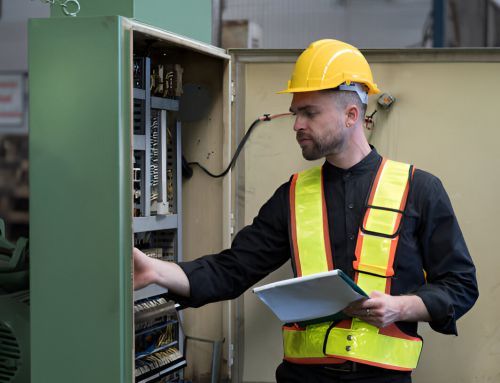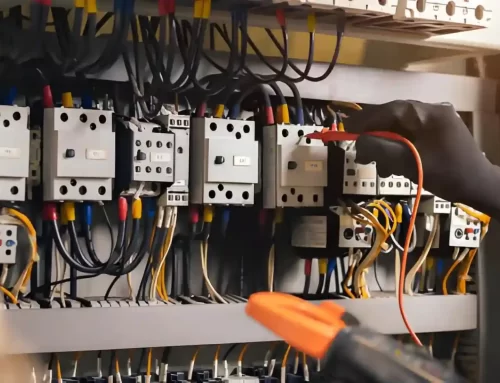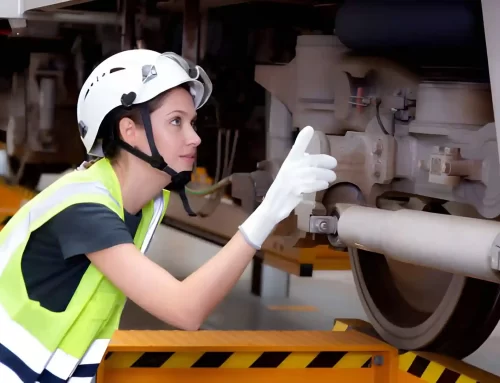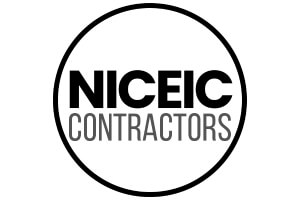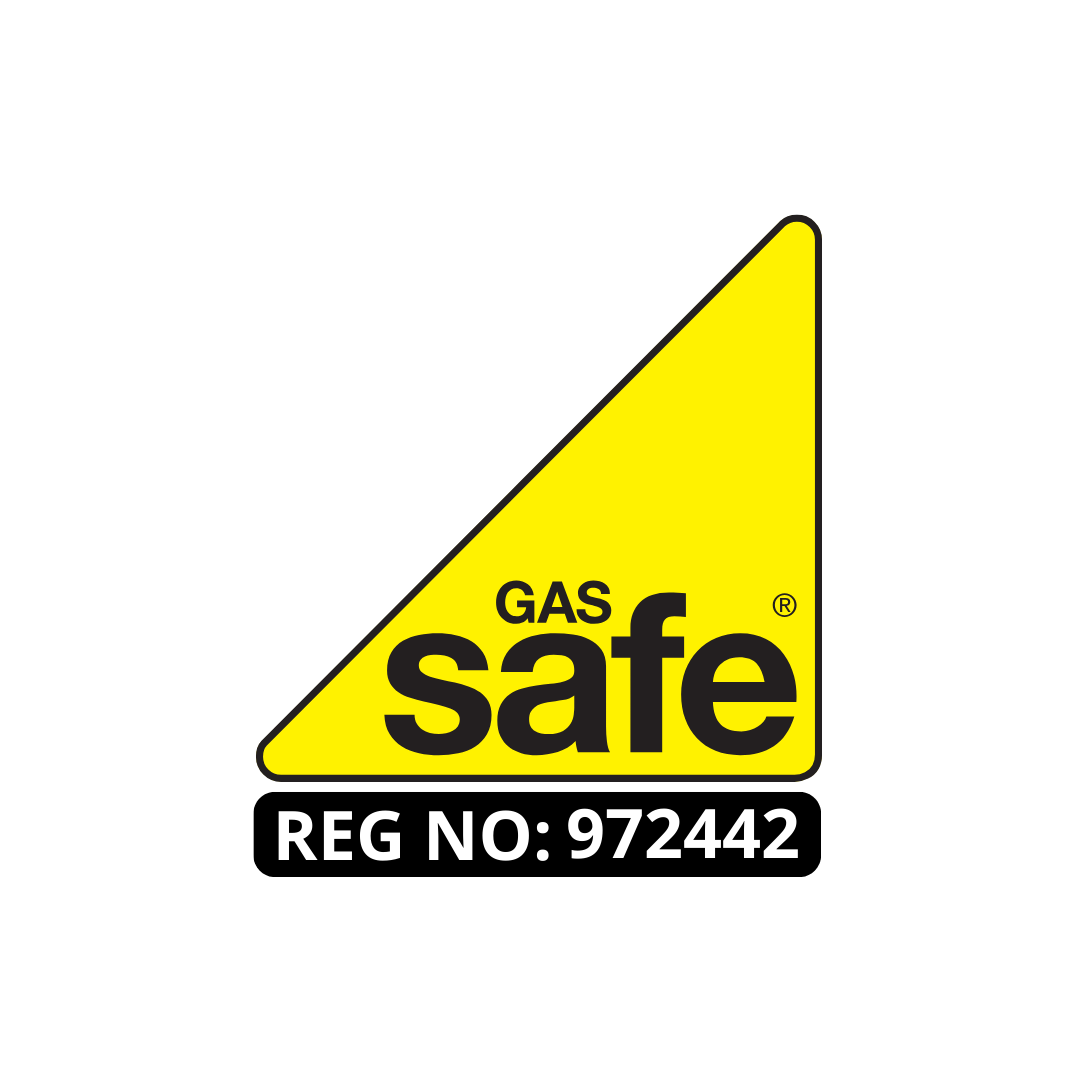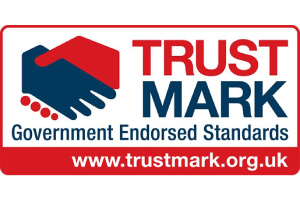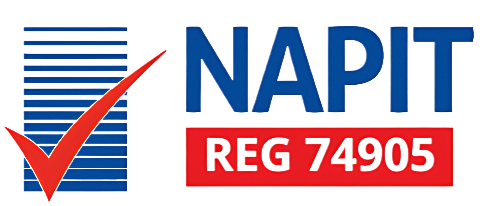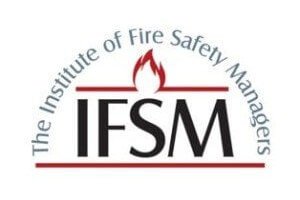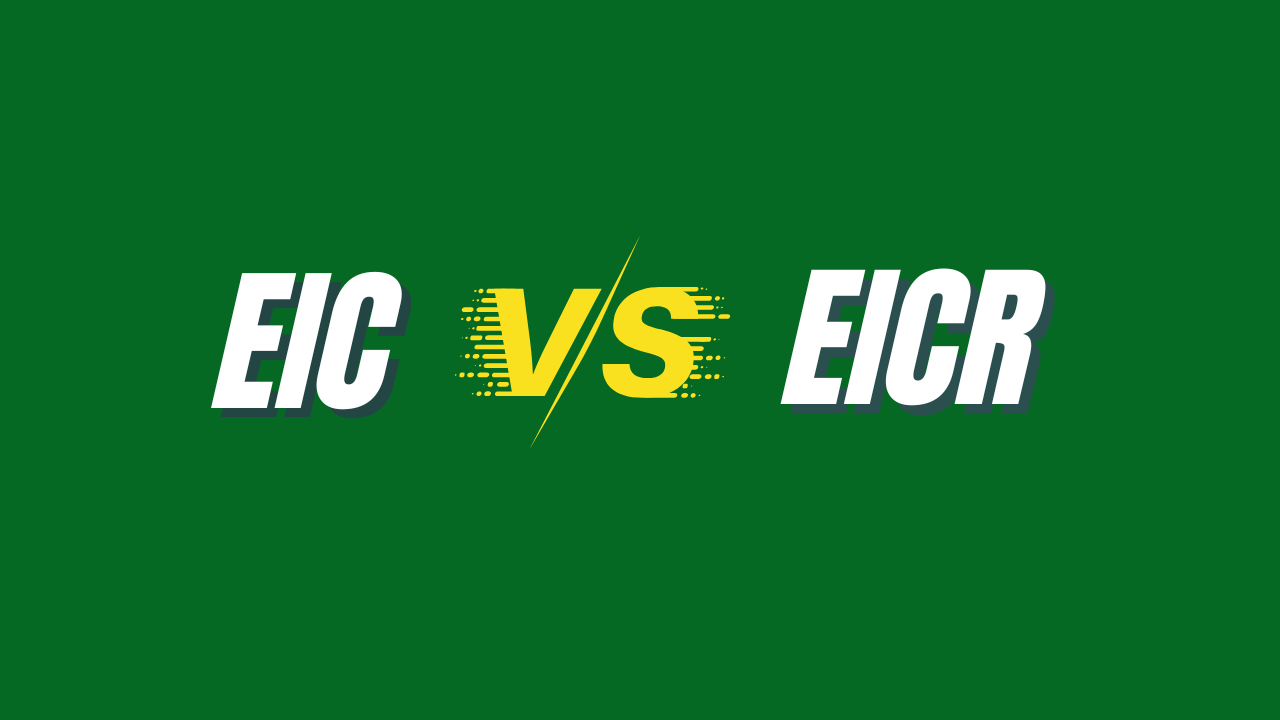
In the field of electrical safety and compliance, understanding The Critical Differences Between an EIC and EICR You Can’t Afford to Ignore, though often overlooked. These documents serve different purposes, yet both play a critical role in ensuring the safety and integrity of electrical systems.
An EIC serves as a validation of new electrical installations or major alterations, ensuring they meet the required safety standards at the time of installation. On the other hand, an EICR is conducted on existing electrical systems, primarily to assess their ongoing safety and compliance with current regulations. Understanding these differences is pivotal for property owners, electricians, and safety inspectors who must navigate the complexities of electrical standards. However, the implications of choosing one over the other in specific scenarios are worth exploring further.
Key Takeaways
- An EIC is issued for new installations or major alterations, while an EICR assesses existing installations for compliance.
- EIC confirms installation safety and compliance with BS 7671; EICR identifies non-compliance and safety hazards.
- EIC is a certification for new electrical work, whereas EICR is a periodic review required for ongoing safety.
- EIC is a one-time certificate at installation; EICR must be renewed regularly (every 5 years for commercial, 10 years for residential).
- EICR provides recommendations for necessary improvements, unlike EIC which is a declaration of initial conformity.
The differences between an eic and eicr
Understanding the distinctions between an Electrical Installation Certificate (EIC) and an Electrical Installation Condition Report (EICR) is crucial for ensuring compliance with electrical safety standards.
The EIC serves as a formal declaration by the responsible electrical contractor asserting that the new installation, alteration, or addition is safe to use at the time it was put into service. This certificate is necessary for all new electrical installations and significant modifications, providing a detailed record that the installation complies with the standards set out in BS 7671, which concerns the safety of electrical installations.
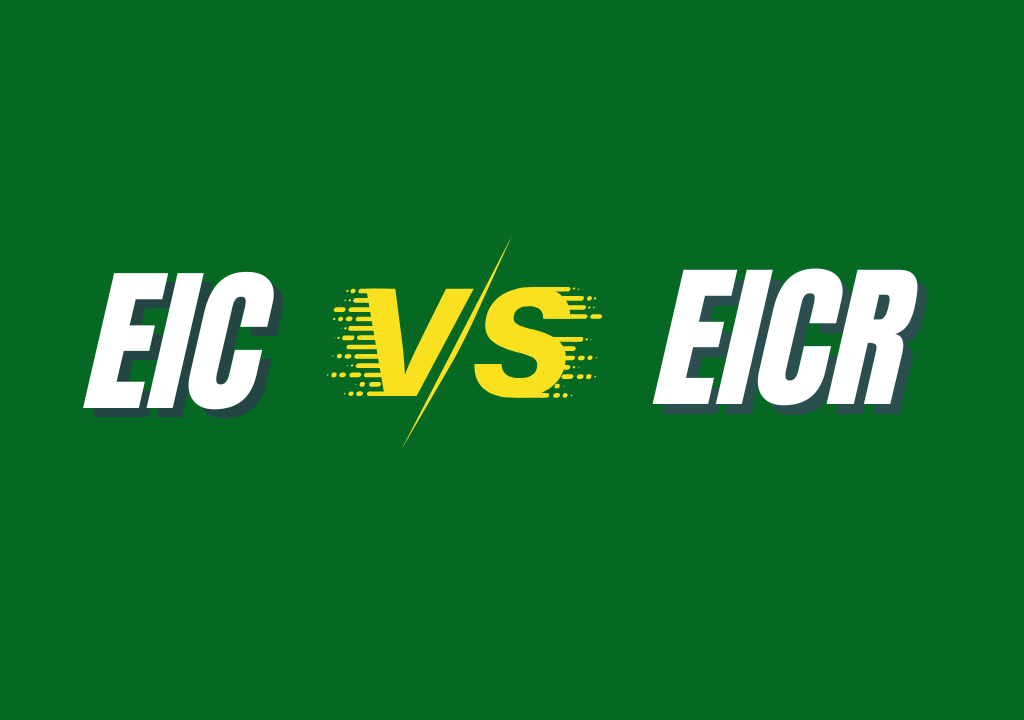
Differences Between an EIC and EICR
On the other hand, the EICR is an inspection report that does not certify new work but rather assesses the condition of existing electrical installations to identify any deficiencies against the BS 7671 safety standards.
This report is typically required at regular intervals depending on the type of establishment, such as every five years for commercial properties or ten years for residential properties. It is a critical document for ensuring ongoing safety and compliance, highlighting areas that require attention to maintain the integrity and safety of the electrical system.
EIC Electrical Certificate
The Electrical Installation Certificate (EIC) is a pivotal document issued by the electrical contractor after the completion of any new electrical installation or significant modification. This certificate serves as a formal declaration that the installation, either whole or part, has been executed following the prevailing standards of BS 7671, the UK national safety standard for electrical installations.
It is crucial to ensure compliance with these standards, which are designed to safeguard persons and property from electrical hazards.
The EIC encompasses detailed sections that include identification of the installation, verification of designs, and details about the circuits, including their characteristics and the protective measures employed. It also records the results of the tests carried out to confirm the safety and functionality of the new or altered installation.
These tests are essential for verifying that the installation is free from any defects that could lead to safety issues.
Only a qualified electrical contractor, who possesses the necessary accreditation, can issue an EIC. This document is fundamental when it comes to subsequent inspections or when modifications need to be made, ensuring that all interventions are traceable and up to standard.
It is also indispensable when selling a property, as it assures potential buyers of the integrity of the electrical installations.
EICR Electrical Certificate
An Electrical Installation Condition Report (EICR) is issued to assess the safety of existing electrical installations. This document is pivotal for homeowners, property managers, and commercial entities to understand the operational integrity and safety compliance of their electrical systems.
An EICR identifies potential electrical hazards, deterioration, and non-compliance with the prevailing standards of electrical safety, which could lead to electrical shocks or fire hazards if not addressed promptly.
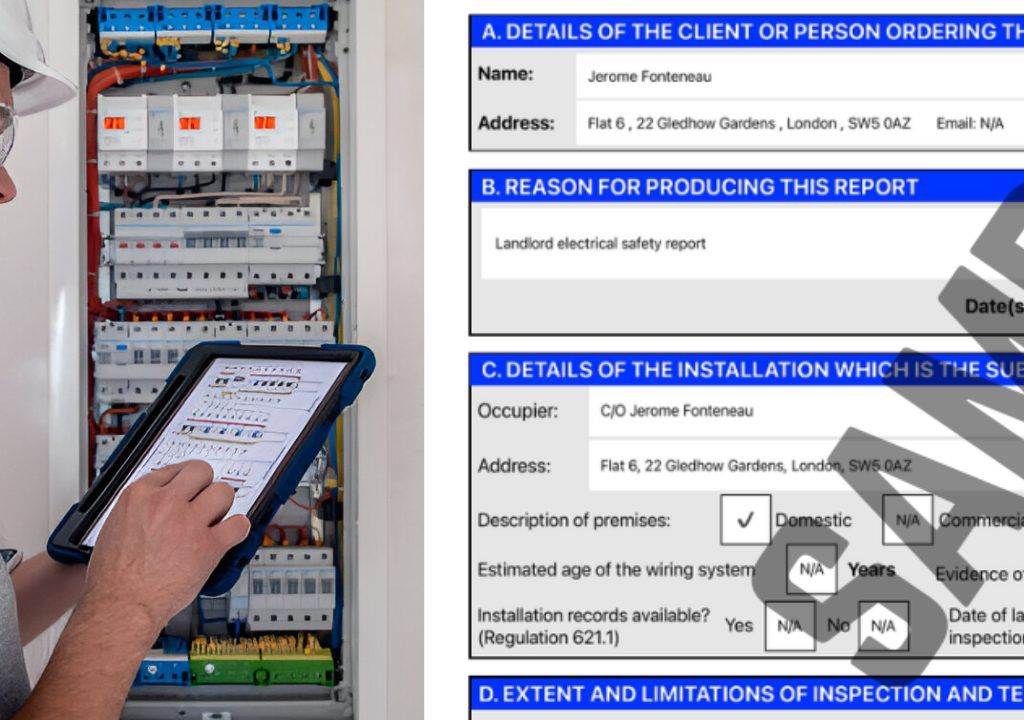
The EICR process involves a thorough inspection and testing of the electrical installations by a qualified electrician or approved contractor. The result is a detailed report that includes:
- Condition of Equipment: Evaluate the physical and operational state of electrical panels, wiring, sockets, and other components.
- Compliance with Standards: Assesses alignment with national safety standards such as the BS 7671 – Requirements for Electrical Installations.
- Recommendations for Remedial Actions: List any necessary corrective measures to ensure safety and compliance, highlighting areas that require immediate attention.
This report is not only a reflective assessment but a proactive measure to mitigate risks associated with electrical faults, thereby enhancing the safety and longevity of the property’s electrical system.
EIC certificate cost
EIC certificate costs can vary widely depending on several factors, including the size and complexity of the electrical installation, the location of the property, and the rates charged by the inspecting contractor.

For instance, a larger or more complex installation, such as those found in industrial settings, will typically incur higher costs due to the increased amount of work and expertise required to assess and certify the systems accurately.
Additionally, geographical variations can influence the overall cost, with urban areas often presenting higher rates than rural locations due to differences in contractor availability and operational overheads.
It’s also pertinent to consider the specific requirements of the electrical installation when estimating the cost. For example, installations involving high-voltage systems or specialized machinery might necessitate the involvement of contractors with specific qualifications or certifications, potentially elevating the cost.
Moreover, the current condition of the electrical system plays a crucial role. An older or poorly maintained installation may require more extensive testing and potential remediation before it can be certified, further impacting the cost.
Understanding these variables is essential for stakeholders to anticipate the financial commitment involved in obtaining an EIC certificate and to budget accordingly.
EICR certificate cost
Just as with the EIC certificate, costs associated with obtaining an Electrical Installation Condition Report (EICR) can vary considerably based on several key factors. The expense is influenced by the size and complexity of the electrical installation, the location of the property, and the electrician’s level of expertise and rates.

Factors influencing EICR costs include:
- Size and Type of Property: Larger properties or those with extensive and complex electrical systems typically require more time to inspect and test, leading to higher costs. Commercial setups, due to their complexity, often incur greater fees than residential properties.
- Geographical Location: Costs can be higher in major urban centers compared to rural areas due to varying hourly rates for skilled labor and the potential need for additional travel time and expenses.
- Condition of Electrical Installation: Older or poorly maintained installations might require a more thorough examination to identify potential risks and faults, thus extending the time and increasing the cost of the report.
These costs are critical investments in safety and compliance with legal standards, ensuring that the electrical installations are operationally efficient and hazard-free.
Understanding these factors helps in budgeting for an EICR appropriately.
Frequently Asked Questions
How Long Does It Take to Complete an EIC or Eicr?
The completion time for an EIC or EICR varies, typically depending on the property’s size and complexity. Generally, an EIC takes a few hours, while an EICR might require several hours to a full day.
Can a Homeowner Perform an EIC or EICR Themselves?
Homeowners are generally not qualified to perform an EIC or EICR themselves, as these assessments require specific electrical knowledge and certifications that professionals possess to ensure safety and compliance with regulatory standards.
Are There Legal Penalties for Not Having an EIC or Eicr?
Yes, legal penalties can apply for not having an EIC or EICR, as these documents certify electrical safety compliance. Penalties vary by jurisdiction but can include fines or enforced corrective measures.
What Happens if an EIC or EICR Fails?
If an EIC or EICR fails, it indicates non-compliance with electrical safety standards, necessitating immediate remedial actions to correct faults. Failure to address these issues can lead to legal and safety consequences.
How Often Should EIC and EICR Be Updated or Renewed?
EICs and EICRs should be updated or renewed by regulatory guidelines, typically every 3-5 years for commercial properties and 10 years for residential, or upon significant electrical installation changes or ownership transfer.
Our Pricing
| Our Electrical Safety Certificate Prices |
|---|
| Studio Apartment £67.99 |
| 1 – 3 Bedroom £94.99 |
| 4 Bedroom £104.99 |
| 5 Bedroom £139.99 |
Check Out Our Other Services
| EICR | Commercial EICR | Emergency Light Certificate |
|---|---|---|
| Electrical Diagnostic | PAT Testing | Fuse Box Installation |
About the Author: LandlordCertificate
Related Posts
Get Social
Recent Posts
- Fire Risk Assessment London: Essential Guidance for Landlords and Managers
- Complete guide to gas safety certificate compliance for property use
- Why a Fire Safety Certificate Is Critical for Property Compliance
- How Businesses Can Manage Portable Appliance Testing Without Disrupting Daily Operations
- Unlock the Secrets of Gas Safety Certificates Every Landlord Should Know


